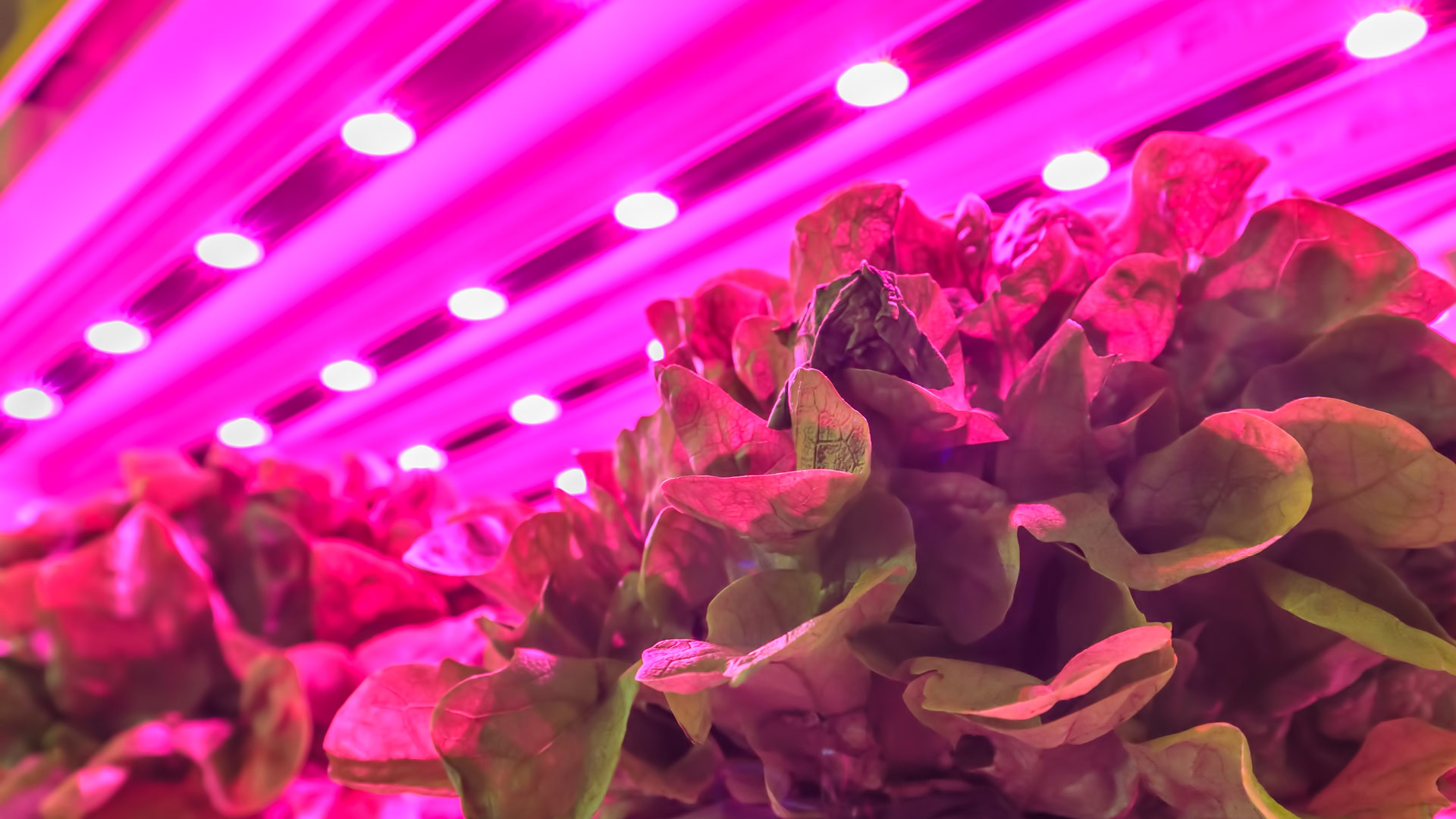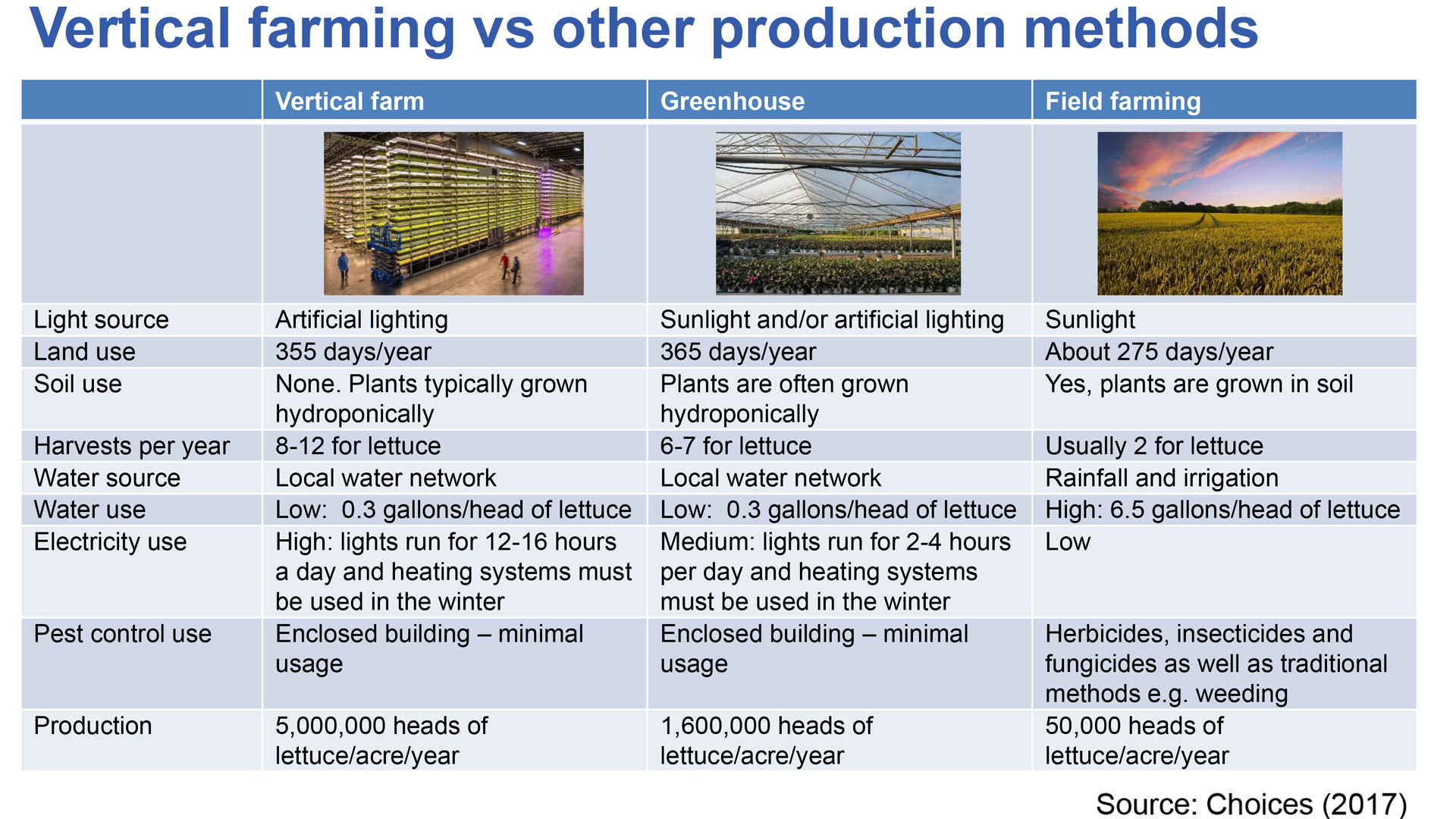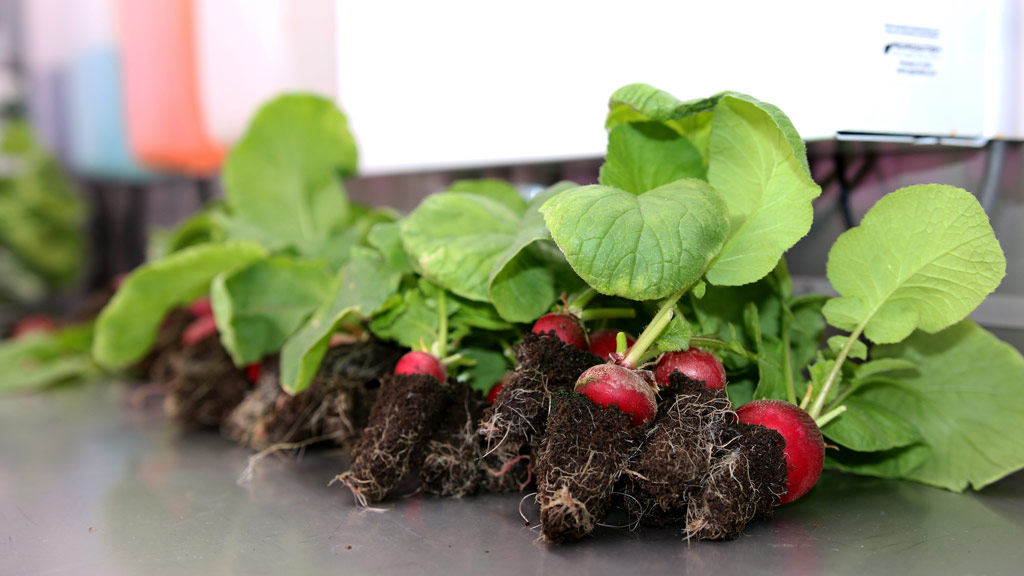
Q: Could you explain briefly how vertical farming differs from traditional agriculture?
Dr Michael Dent: The idea is that you grow crops indoors, generally stacked in vertical layers under controlled environmental conditions – using LEDs or hydroponics for instance – giving them exactly what they need. It is far more efficient than traditional farming and you can do it wherever. You just need a building with a power and a water source.
In the USA, lots of fresh produce is grown in California. So if you’re buying in New York, that produce has travelled more than 3,000km and passed through 3 or 4 facilities – which has implications for freshness and cross-contamination. Vertical farming could enable super local production and high-quality produce.

Q: What type of crops can be grown? Must they be high-value to make the operation financially viable?
MD: You can theoretically grow any crop. Currently, though, because vertical farms are expensive to run they are focusing on high-value, easy-to-grow crops, such as leafy greens and herbs. Some are also trying to grow berries to diversify.
To grow indoors under controlled conditions you need to understand the crop. Plants more complex than the leafy greens and herbs favoured by vertical farming companies often have life cycles that depend on seasonal and environmental factors, such as winds, temperature and moisture changes. Vertical farming companies hoping to successfully grow these plants in a completely controlled environment will need to fully understand the plants' life cycles and replicate the changing conditions inside the farm, something that may require complex and expensive climate control systems.
Q: What are the different business models for vertical farming?
MD: Growing Underground and companies such as Aerofarms that use an aeroponic growth system have built vertical farms that they manage themselves. It’s a rare approach, and a difficult one; but you can do so if you have the expertise and use high-efficiency equipment.
Then there are companies that produce hardware and equipment for vertical farms, such as LEDs for indoor growing, but operate no farms themselves.
LettUs Grow in Bristol is a tech provider that provides hardware and software for vertical farms. It also has a turnkey container farm product called DROP & GROW which uses aeroponic technology and farm management software, Ostara.
.jpg)
Freightfarms makes and sells indoor structures based on 12m shipping containers that can be bought as ready-to-go vertical farms. Customers can also buy an app that enables farms pretty much to run themselves.


Then there’s the classic start-up route of getting funding from investors to build a farm. In countries such as Singapore, the government will help with this because it is keen on food security. The sector has been getting lots of interest from investors around the world recently – including $500m of funding in the USA for a single company.
Q: What are the production and running costs for a vertical farm?
MD: Although electricity and labour costs are high, others vary a lot. At one end of the spectrum, Jones Food Company has invested a lot in automated facilities. Operating costs will be cut if all processes can be automated, but creating the robots and machinery can be very expensive. It can take a long time to reap back major capital expenditure by selling lettuce and leafy greens, so automation is not the answer to all problems, it’s just one option.
Historically, vertical farmers went out of business because labour costs were too high, and vertical stacking proved inefficient. This is because seeding, planting, and harvesting crops manually is hard work, while shipping containers are small and initially not suited to people working side by side. In large facilities, as trays were stacked vertically you had to get workers up there, but scissor lifts were a dirty and dangerous way to do so.
That’s why it may be better to run a small operation, where you’re not stacking trays on top of each other and you don’t need to hire lots of staff. But that comes at the cost of not producing so much, and it can then be a struggle to grow cheap food.
Q: Is the carbon footprint of vertical farms smaller than for traditional farming?
MD: Calculating and managing carbon footprint is a challenge for the sector. Indoor farms are still very energy-intensive, even with LED lighting. Some companies only use renewable energy: LettUs Grow has a deal with green energy provider, Octopus Energy for Business, for instance.
But there are other considerations around sustainability, and which metric to consider. For instance, vertical farms reduce water use. But is that more important than their high energy consumption?
They also save space, and take traffic off the road. Lots of vertical farming advocates say you can lower your carbon footprint by reducing food miles and producing locally. But sometimes food shipped from the other side of the world can be as sustainable as locally produced food because it’s not always the total distance travelled that matters but the last mile, which is the worst in terms of sustainability. For instance, transporting 10,000 lettuce in one lorry can be better for the environment than lots of small vans delivering multiple products.
Q: What is the optimum scale for vertical farms?
MD: That’s debatable. The argument is that by making farms as large as possible there are economies of scale because they can invest in hi-tech automation, which spreads the cost across far more products than a smaller facility.
But large facilities are less flexible than smaller ones, and less responsive to specific or niche demands from the market – for instance, if one restaurant needs a particular product. Farm produce also tends to fluctuate in value, so the lack of reliable market demand can be tricky for gigantic facilities.
If companies can guarantee a set level of demand, operating on a large scale can be good. You need to think through the business model. For instance, the Jones Food Company has partnered with Ocado, which has promised to buy a set amount of produce per year.
Q: What are the implications of vertical farming for land use?
MD: You might think that vertical farming would free up agricultural land because you’re using a much smaller facility. However, at the moment it is only producing fresh fruit and vegetables, which represent just a small proportion of overall agricultural land use.
In the USA for instance, only 2% of agricultural land is used to grow fresh fruit, but far more is used to produce wheat and soy. So if the country grew all its fresh fruit and vegetables indoors it would still only reclaim 2% of its agricultural land, which has fairly minimal implications.
Q: Has COVID-19 affected growers?
MD: If anything it seems to have boosted investment, because it has highlighted the instability in the global food supply chain, whether that be empty shelves in shops or problems with international trade. So the pandemic has increased awareness of risk, which can only be good for the vertical farming sector.
Q: What are the risks and challenges for the sector?
MD: I want to emphasise that vertical farming can be done well, it just requires careful consideration of your business model. At the moment it may be all about leafy greens and herbs, but that’s still a $1bn market worldwide and fresh local produce is in great demand. So it has a future in that context.
It is not necessarily about growing food in a skyscraper as some of the hype would have it, but it’s definitely a start.
Q: What is the produce forecast internationally?
MD: Internationally the vertical farming market will be worth £1.5bn by 2030.
Q: What does the future look like for indoor farms?
MD: Lots of people want to invest, thanks to the hype around the industry. But I wonder whether the eye-watering $500m in funding raised in the USA for a single company for a technology that is currently producing lettuce and leafy greens in a manner more expensive than conventional farming is sustainable. James Lloyd Jones on the other hand is not claiming to have revolutionised food production.
The market is going to grow, but it needs to manage expectations. It is currently a good way of growing leafy greens and herbs, and there’s a big market for it. As for the talk about how it will save the world and revolutionise farming, perhaps it will – but for now it works best for locally produced leafy greens. The best companies, in the future, will be, I think, the ones that understand food and how to grow crops.
